Separate family rearing can impact the accuracy of merit evaluations and selection responses
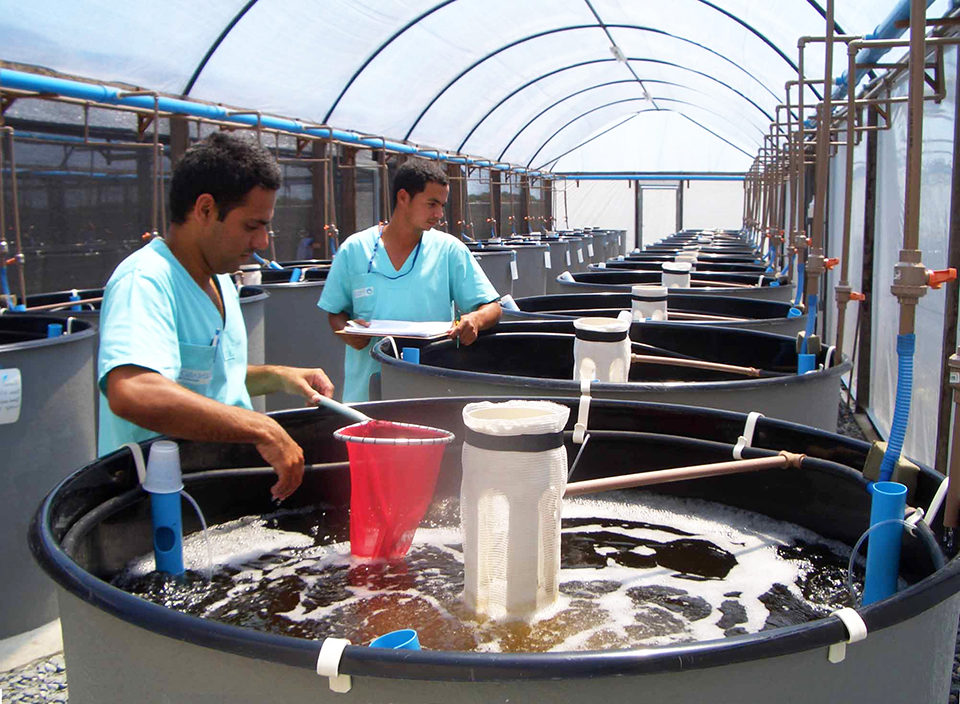
Elastomer tagging is commonly used as the main tool for family identification in shrimp breeding. This requires the separate rearing of families throughout the larviculture and juvenile phases until animals reach an average weight of 2 grams, when they can be handled for tagging purposes.
Separate family rearing leads to tank-derived common environmental effects that are statistically confounded with full-sib family genetic effects. This can impact the accuracy of merit evaluations and selection responses if the magnitude of the tank effects is large enough.
Study setup
The authors conducted an experiment at Genearch Aquacultura Lda. in Brazil to quantify the magnitudes of these tank effects and their impacts on selection responses. Genetic batches in Genearch’s shrimp-breeding program are usually composed of 60 full-sib families, but for this experiment, only 20 spawns were obtained.
Each spawn was immediately divided into three sets of randomly chosen nauplii that were stocked in different larviculture vessels, randomly distributed across the larviculture area and then reared as different families in separate tanks up to the 2-gram juvenile stage. They were then elastomer tagged with different family tags.
After tagging, the normal genetic nucleus performance tests were conducted with all 60 tagged “families” of three replicates of the 20 spawns. The families were mixed in eight growout tanks at 63 animals/family/tank for a total of 504 animals/replicate and 1,512 animals/family.
The biofloc system had a density of 125 shrimp per square meter. Harvest took place at an average weight of about 18 grams, when all shrimp were individually weighed, and their family tags were recorded.
Larviculture, juvenile rearing
Tank effects during larviculture from nauplii to 22-day-old postlarvae (PL22) and further rearing to 2-gram juveniles were confounded and compound under the experimental design and could not be separated statistically.
Aggregate larviculture and juvenile rearing tank effects on harvest weight, test weekly growth and grow-out survival were estimated under a mixed linear model. The model included the fixed effects of hatch day, stocking weight and days on test; and the random effects of larviculture/juvenile rearing tank within family, family, grow-out tank and family/grow-out tank interaction.
Pond culture
For a field test in a commercial pond, similar approaches were followed. A random sample of PL22 animals from each replicate genetic nucleus larviculture vessel was transferred to 60 cages kept in a commercial pond where they were separately reared until tagging. The field test was stocked at a density of 36 shrimp per square meter with all families mixed in one pond. About 150 tagged animals were stocked per replicate, managed under routine commercial procedures and harvested at an average weight of 8 grams.
Results
The aggregate larviculture and juvenile rearing tank effects were highly significant (0.002 > P > 0) for all three grow-out traits in both performance tests. They represented from 0.01 to 3.40 percent of the total variance, from 1.10 to 30.40 percent of the genetic variance and from 2.20 to 37.80 percent of the full-sib family variance. The results are summarized in Table 1.
Rocha, Aggregate larviculture and juvenile rearing tank, Table 1
| Genetic Nucleus Performance Tests Harvest Weight | Genetic Nucleus Performance Tests Weekly Growth | Genetic Nucleus Performance Tests Survival | Field Pond Performance Tests Harvest Weight | Field Pond Performance Tests Weekly Growth | Field Pond Performance Tests Survival |
|---|
Genetic Nucleus Performance Tests Harvest Weight | Genetic Nucleus Performance Tests Weekly Growth | Genetic Nucleus Performance Tests Survival | Field Pond Performance Tests Harvest Weight | Field Pond Performance Tests Weekly Growth | Field Pond Performance Tests Survival | |
|---|---|---|---|---|---|---|
| Tank variance | 0.1169 g2 | 0.001320 (g/week)2 | 5.47E-06 | 0.2205 g2 | 0.004807 (g/week)2 | 0.001194 |
| Genetic variance | 0.8894 g2 | 0.009696 (g/week)2 | 0.000478 | 0.7258 g2 | 0.016392 (g/week)2 | 0.009456 |
| Tank/genetic variance | 13.1% | 13.6% | 1.1% | 30.4% | 29.3% | 12.6% |
| Tank/full-sib family variance | 20.8% | 21.4% | 2.2% | 37.8% | 37.0% | 20.2% |
| Tank P value | 0 | 0 | 0.0021700 | 0.0004780 | 0.0005920 | 0.0000394 |
In the field test, the tank/cage effects on the grow-out growth traits were determined by distance from the aerator and cage final density effects which, once introduced in the statistical model, practically annulled the tank effects, rendering them non-significant (0.75 < P < 1.00) and representing only 0.2 to 3.1 percent of the three different variances mentioned. The nature of these cage effects on grow-out survival was not identified in the field test case.
In the genetic nucleus performance tests, the magnitude of the tank effects detected was more modest than in the field test, and their nature is still being investigated.
Based on these detected tank effects, it was theoretically estimated that under the current breeding program design and estimated sets of parameters, selection responses per generation were reduced by 33.8 and 32.7 percent for, respectively, field test harvest weight and weekly growth; and by 14.4 and 14.5 percent for, respectively, genetic nucleus harvest weight and weekly growth (Table 2).
Rocha, Reduction in selection response determined by detected tank effects, Table 2
| Genetic Nucleus Traits | Genetic Nucleus Traits | Field Commercial Pond Traits | Field Commercial Pond Trait |
|---|
Genetic Nucleus Traits | Genetic Nucleus Traits | Field Commercial Pond Traits | Field Commercial Pond Trait |
|---|---|---|---|
| Harvest Weight | Test Weekly Growth | Harvest Weight | Test Weekly Growth |
(Editor’s Note: This article was originally published in the March/April 2010 print edition of the Global Aquaculture Advocate.)
Authors
-
João L. Rocha, Ph.D.
Genearch Aquacultura Lda.
Praia de Pititinga
RN, CEP 59578, Brazil -
Ana C. Guerrelhas
Genearch Aquacultura Lda.
Praia de Pititinga
RN, CEP 59578, Brazil -
Ana K. Teixeira
Genearch Aquacultura Lda.
Praia de Pititinga
RN, CEP 59578, Brazil -
Flávio A. Farias
Genearch Aquacultura Lda.
Praia de Pititinga
RN, CEP 59578, Brazil -
Ana P. Teixeira
Genearch Aquacultura Lda.
Praia de Pititinga
RN, CEP 59578, Brazil
Tagged With
Related Posts
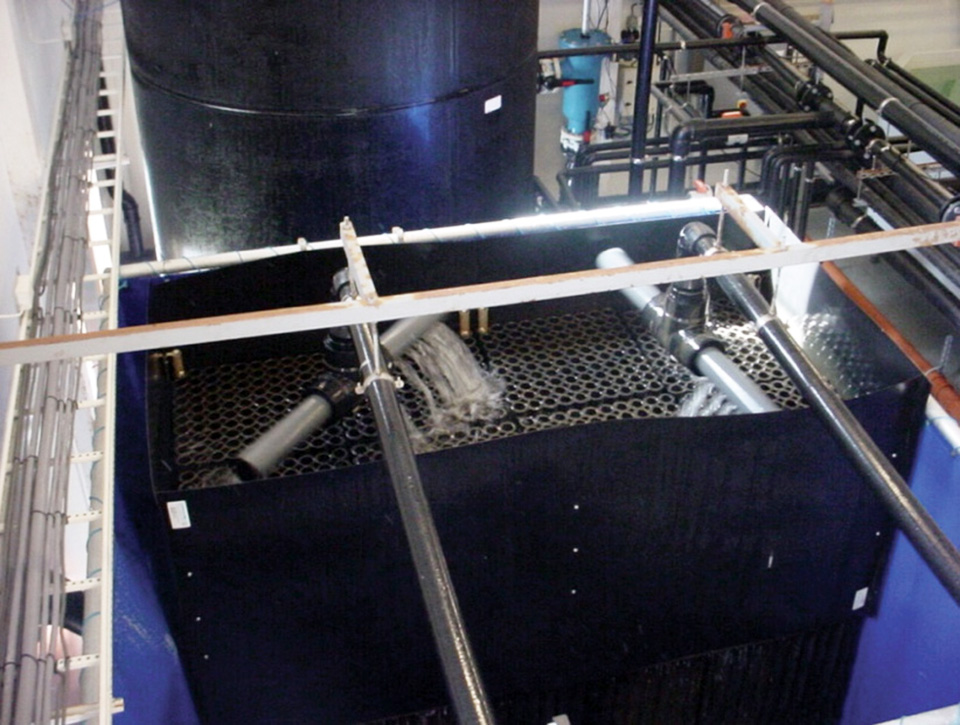
Innovation & Investment
A review of unit processes in RAS systems
Since un-ionized ammonia-nitrogen and nitrite-nitrogen are toxic to most finfish, controlling their concentrations in culture tanks is a primary objective in the design of recirculating aquaculture systems.
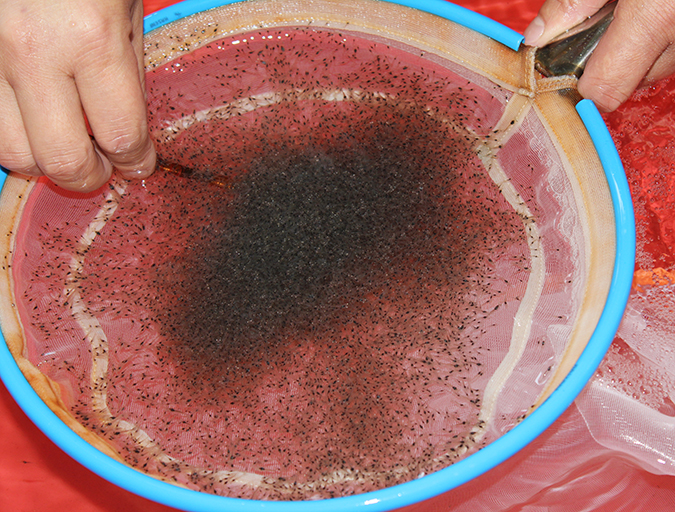
Health & Welfare
Acclimating shrimp postlarvae before pond stocking
Shrimp postlarvae acclimation before stocking into the various growout systems (ponds, raceways, tanks) is a critical – and often overlooked, sometimes taken for granted – step in the shrimp culture process. Various water quality parameters should be changed slowly so that the young shrimp have the time to gradually adapt to the new conditions.
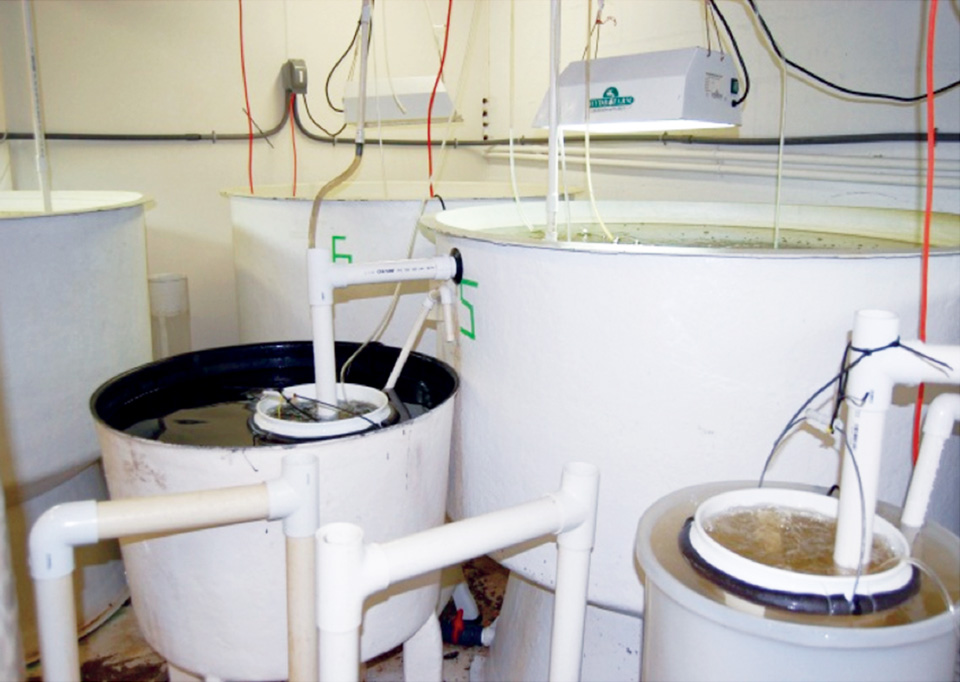
Health & Welfare
Advances in intensive copepod production technology
Research at the Oceanic Institute has been successful in overcoming bottlenecks associated with rearing small-mouthed fish larvae by finding a suitable first feed. Early work on the calanoid copepod Parvocalanus crassirostris focused on parameters necessary for successful maintenance of stock cultures.
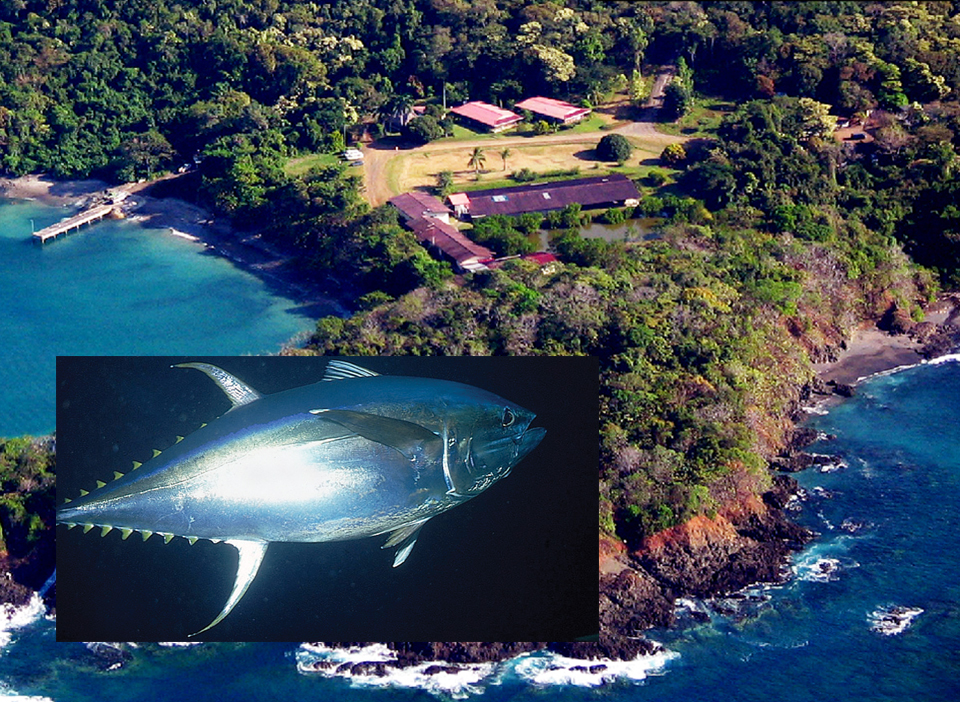
Health & Welfare
Achotines laboratory home to continuing studies of tuna early life history
The Inter-American Tropical Tuna Commission Achotines Laboratory in southern Panama is the world’s only facility with nearly year-round availability of tuna eggs and larvae. A study is comparing the reproductive biology, genetics and early life history of yellowfin and Pacific bluefin tuna.


